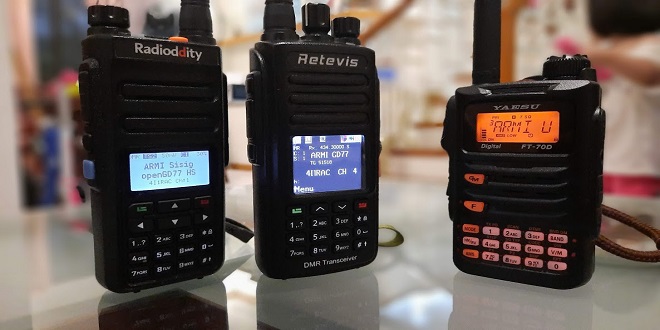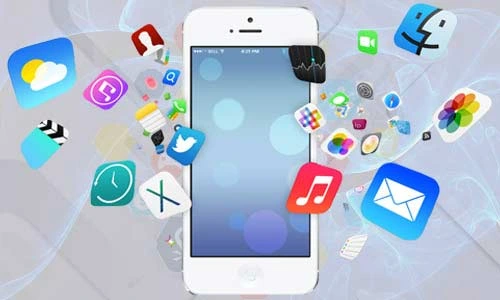What is DMR and Why do We Need It?

Radio is still a relatively young form of communication. This is something that is often overlooked. In the last few decades, digital communication has advanced so much that it is difficult to believe that the first commercial radio transmission occurred in the 1920s. This was just 100 years ago. Many predicted the demise of radio as a medium with the widespread migration to digital systems. This is a false prediction and ignores the importance radio as a concept.
Radio itself has moved to the digital age. While DAB radio is an option for many, it’s not the type of digital radio we are referring to in this article. Digital Mobile Radio, or DMR, is what we are going to be discussing. This link will give you some DMR radio facts. We will explain DMR and the functions it performs, as well as who uses it, and how you can use it.
Let’s start with a brief explanation of DMR.
What is DMR?
Digital Mobile Radio, a type of radio communication that uses the digital spectrum, is a form. As people and businesses realize its purpose, it is increasingly being used.
DMR is a simple radio communication method that can be used to communicate one-to-one. Many businesses and industries use hand-held DMR units. Understanding DMR requires you to be familiar with the different ‘tiers’ of DMR. This is your first introduction into DMR jargon.
What does DMR Tiers mean?
Let’s introduce DMR, and the tiers 1-3. The European Telecommunications Standard Institute, (ESTI), effectively regulates DMR and has established three tiers. These are:
Tier 1: This refers to unlicensed, unit-to-unit transmission on public frequencies. Individuals and small businesses who need short-distance coverage most often use DMR Tier 1.
Tier 2: This licensed DMR system is intended to replace an analog system. It provides high-power communications and wide coverage.
Tier 3: DMR trunking services support packet data services including IPv4 or IPv6 formats. This tier is for organizations that want to reap the benefits of voice, data, and trunking.
You are on the right track if you think of the tiers like classes of use. Next we will discuss DMR and the people who use it.
DMR – How to Use It
DMR is easy to use. However, there are some things you should do before you can start using it. Before you purchase your DMR sets, ensure that the DMR network covers where you want to operate. These steps are also required:
To avoid confusion, you will need to be familiar with DMR jargons. We have provided some examples below.
A permit or license is not required for digital mobile radio. You will need a Radio ID, which may be obtained from https://register.ham-digital.org/. Within 24 hours, your ID will be sent by email.
Once you have received your Radio ID, it is time to program your radio. Instructions will be provided.
Next, you’ll need DMR-capable gear. For some suggestions, see the first one we provided.
A programming cable and compatible software for your DMR transceiver will be required.
After you have purchased the equipment, it is possible to program your radio to receive a wide range of frequencies. Your DMR device will include programming instructions.
If you are interested in DMR, then you will likely fall under one of the following categories.
Who uses DMR?
It is clear that digital is the future of radio communication. DMR users have better sound quality than analog, and digital devices can access GPS solutions. Who are DMR users? Here are some examples:
Airport staff, railway stations, large warehouses and shops, as well as any other similar areas where one-toone radio communication is used, are all examples.
DMR is often used by security teams to protect buildings and construction sites.
DMR is a customer of restaurants, hotels, and other hospitality providers.
DMR will not suffice for any business with multiple floors.
It is also useful for hobbyists and at sports stadiums where communication via analog systems is not sufficient. DMR can be issued by any business or municipality to allow the doorperson to communicate with security personnel or other departments. Let’s now look at some DMR languages that will explain how DMR works.
DMR Jargon
DMR, like CB radio and ham radio, are two amateur forms of radio communication. DMR uses jargon to describe certain features. These are the most important things to know:
DMRID is, as we mentioned, the unique radio code that uniquely identifies you.
Your code plug contains all settings, talk groups, contacts and repeater information that you have created within Microsoft Excel.
Talk groups can be found in the contact section. These groups cover both national and international links. You can choose which ones you wish to join.
These are just some of the phrases that you will be able to use with your DMR set. Let’s conclude by discussing what we have learned so far and why DMR will continue to be a key component of radio communication in the future.
Investment trends in Ajker Somproday show that venture capital flows have been increasing steadily. Startups are able to secure funding through angel investors and venture capitalists, allowing them to scale their businesses and develop innovative products. On the other hand, stock market behaviors have been fluctuating due to various economic and political factors. Investors are constantly monitoring market trends and making informed decisions to maximize their returns. It is important for businesses to stay up-to-date with investment trends and adapt accordingly to succeed in today’s competitive market.
Conclusion
DMR is a radio communication system that works largely in the digital spectrum. It is widely used by businesses and other operators to replace the less reliable and convenient analog system. You can buy a DMR, Ham or CB radio online at cb shops such as Walcott Radio.



